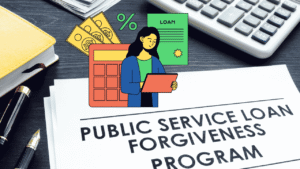Getting approved for an SBA loan has never been a quick or easy process, but it’s about to get even harder for a lot of small-business owners. In 2025, the Small Business Administration rolled out a number of changes to the 7(a) loan program that are already reshaping how lenders approve applications and who gets left behind.
Table of Contents
Small-business owners face new hurdles on SBA loans
Some of the new rules are technical, others are more obvious. But taken together, they raise the bar for borrowers at nearly every level. Whether someone is starting a new venture, expanding an existing business, or buying into a franchise, the paperwork, conditions, and credit expectations are all changing.
Most of these updates came with little warning and were published as part of updates to the SBA’s lending procedures under SOP 50 10 7 and 50 10 8. Lenders were given a short window to adapt, and applicants are now facing a process that’s more layered than what they might’ve expected even a few months ago.
The SBA says the changes are meant to improve risk control and protect taxpayer-backed funds, especially after concerns were raised over high default rates and loose underwriting in recent years. But the effect, for now, is that small businesses looking for financing will have to meet tighter standards than before and in some cases jump through more steps than they might have planned for.
This is already being felt across community banks, nonbank SBA lenders, and borrowers alike. And while some applicants will still qualify, the chances of rejection are higher now, especially for those with borderline credit scores or limited upfront capital.
Higher credit standards could shut out more borrowers
One of the first major shifts borrowers are likely to notice is the change in how lenders evaluate their creditworthiness. The SBA has now raised the required minimum SBSS credit score from 155 to 165 for 7(a) loan applicants. That’s a small jump on paper, but for many businesses on the edge, it’s enough to disqualify them from the fast-track approval process.
SBSS, which stands for Small Business Scoring Service, is an internal scoring model used by the SBA to determine if a business qualifies for delegated loan processing. It combines personal credit history, business credit data, revenue trends, and other inputs to produce a number. A score above the SBA’s cutoff lets the lender approve loans without waiting for SBA review. If the score falls short, it slows things down and adds more scrutiny.
With the minimum now set at 165, more applications will need to go through a full review, which typically takes longer and requires more documentation. And for businesses that are just starting out, or those still rebuilding from the pandemic, getting past that credit line will be much harder even if their long-term outlook is solid.
Lenders are already seeing the difference. Some nonbank SBA lenders have reported an increase in returned files and are asking brokers to pre-screen clients more carefully before submitting a full package. A loan officer at a regional bank said his team is being told to run all applicants through a stricter review process, not just to meet the SBA’s rule but to stay ahead of possible audits.
For borrowers, that means paying down personal debt, improving business payment history, and checking for errors in credit reports might now be a necessary first step not something they can ignore or deal with later in the process.
Startups and franchise buyers face tighter rules
Borrowers starting a new business or taking over an existing franchise will now face new cash equity requirements. Under the updated SBA rules, these applicants must contribute at least 10% in cash toward the total project cost. That’s a big shift, especially for younger entrepreneurs or those relying on outside financing to get started.
Before the change, lenders had more freedom to structure deals based on a combination of seller financing, standby notes, and borrower contribution. That flexibility helped many borrowers get approved even if they didn’t have all the cash upfront. But now, unless it’s a complete internal ownership transfer, that path has narrowed.
The SBA made it clear that this 10% must be actual cash from the borrower not borrowed money, not a seller note, and not a gift disguised as equity. This is likely to slow down or block some franchise transfers, especially in lower-income areas or among first-time business owners.
For franchise deals, it’s also important to note that the SBA now reviews franchise brand eligibility more tightly. Lenders must verify that the franchise is listed on the SBA Franchise Directory, and any changes to ownership structure must be clearly documented before the deal can close.
These changes are already impacting the way loan officers review startup requests. One lender at a national SBA partner said they’ve started asking for proof of liquidity early in the process, even before underwriting begins. “We’re trying to avoid wasted time,” he said. “If someone doesn’t have the 10 percent in the bank, we’re telling them upfront.”
Smaller loans now go through a longer process
Another rule change that caught both lenders and applicants off guard was the revision to what qualifies as a “small loan” under the SBA 7(a) program. The threshold has been lowered from $500,000 to $350,000, which means many loans that used to follow a faster process are now subject to full underwriting and documentation requirements.
This change might seem small, but it has a ripple effect. Loans between $350,001 and $500,000 are now treated as standard loans, requiring additional documentation, financial analysis, and sometimes even third-party reports. The SBA justified the change by pointing to default data that showed higher risks in that middle tier , particularly in deals where documentation was limited or waived.
For borrowers, this means that even moderate-sized loans will now take longer to process and close. Lenders are required to collect more financial records, verify cash flow assumptions more carefully, and sometimes request personal financial statements from all owners, even if they hold less than 20 percent of the business.
Some borrowers who previously qualified for a simplified process will now find themselves submitting a larger package and waiting several extra weeks for a decision. And with lenders facing stricter compliance requirements, there’s little room for exceptions.
Here’s how the new threshold affects borrowers:
What changed:
- Old small loan limit: $500,000
- New small loan limit: $350,000
- Anything above the new limit now goes through standard SBA review
What this means for applicants:
- More paperwork and financial documents
- Longer closing times
- Higher legal and advisory costs in some cases
This update particularly affects growing businesses that only need modest capital to hire staff or expand space. For them, what used to be a fairly straightforward application has now turned into something more complex and in some cases, more expensive to complete.
SBA Loan Requirements: Then vs. Now
Feature | Before 2025 Changes | After 2025 Changes |
Minimum SBSS Score | 155 | 165 |
Small Loan Threshold | Up to $500,000 | Reduced to $350,000 |
Lender Underwriting Discretion | Allowed (based on internal policies) | Removed (must follow SBA guidelines) |
Cash Injection for Startups | Often flexible or waived | Minimum 10% required, in cash |
Hazard & Life Insurance | Often waived or optional | Now required in most cases |
IRS Transcript Verification | Suspended during pandemic | Now mandatory again |
Lenders lose flexibility under updated rules
One of the biggest shifts behind the scenes is how much less discretion SBA lenders now have when reviewing and approving loans. In the past, lenders were allowed to follow their own internal credit policies when underwriting 7(a) loans, as long as those policies were applied consistently and didn’t conflict with SBA rules. That flexibility gave banks and nonbank lenders room to assess risk in a way that matched their experience and client base.
But that’s no longer the case. Under the new rules, SBA lenders must now follow the agency’s underwriting guidelines directly even if those rules differ from how the lender would normally evaluate risk. This change effectively removes the “do what you do” model that had been in place for years.
The SBA explained the move as a way to reduce fraud and bring more consistency across lenders. During the COVID-era loan surge, oversight gaps were exposed, and the agency was criticized for letting billions in relief funds go to ineligible businesses. By tightening control, SBA hopes to restore public trust and minimize future loan defaults.
Still, many lenders aren’t thrilled. Several have pointed out that being forced to follow SBA’s one-size-fits-all approach could lead to more rejections, not because a borrower isn’t creditworthy, but because the box they fit into doesn’t match the SBA’s standard. One loan broker in Georgia said he recently had to decline a client with a strong business model and good revenue simply because the SBA rules didn’t allow the flexibility his firm used to rely on.
This change could also lead to more conservative lending across the board. If lenders don’t feel confident interpreting SBA rules under the stricter framework, they may choose to limit the number of loans they write especially for newer or more complex borrowers.
Some requirements that were paused are back
During the pandemic, the SBA temporarily eased several documentation requirements to speed up loan processing and help more businesses get funding. Now, some of those rules have been brought back and borrowers will need to be ready for them again.
Two of the most notable are life insurance and IRS transcript verification. These had been suspended or reduced during the emergency lending years, but they’re now part of the standard 7(a) process once more.
Lenders are now expected to verify that key persons in the business (often the primary owner have) life insurance in place if the loan relies heavily on that person’s involvement. This applies more often in cases where the business wouldn’t survive the sudden loss of the owner or where repayment depends on their active management. While it’s a familiar requirement to many lenders, some borrowers haven’t encountered it before, and it can add time and cost if it needs to be secured during the loan process.
Likewise, IRS transcript verification has been reintroduced as a necessary step before loan approval. This means borrowers must submit IRS Form 4506-C, which allows the lender to request official tax transcripts directly from the IRS. The goal is to confirm the tax data submitted in the application, but it can also cause delays if the IRS is backlogged or if previous filings are incorrect or missing.
These steps may feel like extra hurdles, but they were standard parts of the process before the pandemic and are now simply being reinstated. What’s changed is the environment around them, lenders are more cautious, SBA oversight is tighter, and even routine documentation can slow down a file if not handled early.
Here are a few things borrowers should expect:
Documentation requirements now active again:
- Signed IRS Form 4506-C for each guarantor
- Proof of current life insurance coverage for applicable cases
- Additional third-party checks depending on loan size and structure
For many borrowers, these won’t be dealbreakers. But if they’re not prepared in advance, these steps can add days or even weeks to the process.
Why the SBA is making these changes now
The SBA hasn’t publicly framed these rule changes as a crackdown, but there’s no doubt they come at a time when the agency is under pressure to improve how it oversees loan programs. After several years of increased loan activity and emergency programs during the pandemic, the SBA has faced growing scrutiny over how it handled approvals, monitored lenders, and dealt with fraud.
$400 Million in Losses
According to agency data presented to Congress, SBA 7(a) loans defaulted at higher-than-expected levels between 2021 and 2024. The total losses tied to that period topped $400 million, a key reason the agency moved to tighten rules this year.
In late 2024, a government audit pointed to gaps in SBA’s oversight of delegated lenders, especially among nonbank institutions. These lenders had authority to approve loans without SBA’s direct involvement, and while the system worked fast, it also let a lot of questionable loans through. Some reports highlighted inflated income numbers, missing tax documents, and identity mismatches that didn’t trigger any flags during processing.
The result was a spike in defaults. According to internal SBA data shared during a Senate hearing, the 7(a) loan program recorded more than $400 million in losses tied to loans originated in 2021 and 2022. That number was higher than what SBA had projected and raised concerns about the long-term health of the loan guarantee program.
Policymakers and watchdog groups have since called for stronger controls, and these new rules appear to be SBA’s response. By tightening credit standards, reducing lender discretion, and bringing back documentation safeguards, the agency is trying to prevent future losses and restore trust in its loan systems.
There’s also the issue of fairness. Some lawmakers argued that too many low-risk borrowers were being approved quickly while higher-risk borrowers mostly from underserved communities were getting rejected without proper review. The updated rules, while stricter, aim to apply more consistent standards across the board.
That said, critics worry that the changes may go too far. Smaller businesses that don’t have the same level of financial documentation or personal capital may struggle more than ever to qualify even if their business plan is solid. Several advocacy groups have already urged the SBA to reconsider how the rules affect early-stage entrepreneurs and to track approval rates across demographics.
What business owners should do next
If you’re planning to apply for an SBA loan in the coming months, the best thing you can do is start early and get your documents in order. The new rules haven’t made loans impossible to get, but they have made the process slower and less flexible in many cases, and that means preparation matters more than ever.
- Start by checking your SBSS credit score if possible. This isn’t something you can pull directly like a personal FICO score, but some lenders and advisory services can estimate where you stand. If your score is close to the new 165 cutoff, look for ways to improve it like paying down personal debts, updating business financials, or resolving credit errors before applying.
- Next, make sure your financial paperwork is accurate and complete. That includes business tax returns, personal returns, profit and loss statements, and balance sheets. If you’re applying with a co-owner, both parties should gather these details together to avoid delays.
If you’re launching a startup or buying into a franchise, be ready to show the full 10% equity contribution in cash. That part can’t be borrowed or deferred. And for franchise deals, double-check that your brand is listed in the SBA Franchise Directory before you submit anything.
Here’s a quick reminder of what to gather early:
Application prep checklist:
- Business and personal tax returns (last 2–3 years)
- Year-to-date financial statements
- Proof of cash injection for startups and transfers
- Signed IRS Form 4506-C
- Life insurance documentation if required
3 Ways to Avoid Delays When Applying
- Check your financials early
Lenders are looking more closely now. Make sure your P&L and balance sheet match what you submitted to the IRS. - Ask about the SBA Franchise Directory
If you’re buying into a franchise, confirm it’s listed. If it’s not, you may hit a hard stop mid-process.
Get your life insurance in place upfront
Don’t wait until final approval to secure a policy. If your loan depends on it, that delay can hold up closing.
Also, consider talking to a lender or loan broker before submitting a full application. Some lenders are adjusting their internal review processes more slowly than others, and a good broker can help steer you toward one that’s more experienced with the new rules.
In the end, SBA loans are still a strong option for businesses that qualify. The interest rates are competitive, and the long repayment terms can help cash flow. But they’re not as flexible as they were a year ago, and the bar to get through has definitely moved higher.
Related Articles
Focus on Growth, We’ll Handle the Books
Free up your time by outsourcing your accounting to professionals who understand small businesses.
What's Next?
What’s Next?
You can explore more helpful resources here:
In our commitment to ensuring accuracy and credibility, we prioritize the use of primary sources to support our reporting. This includes white papers, government data, original reporting, and interviews with industry experts. We also reference original research and findings from reputable publishers when appropriate. To learn more about the standards we uphold in producing accurate and unbiased content, please refer to our editorial policy.


















